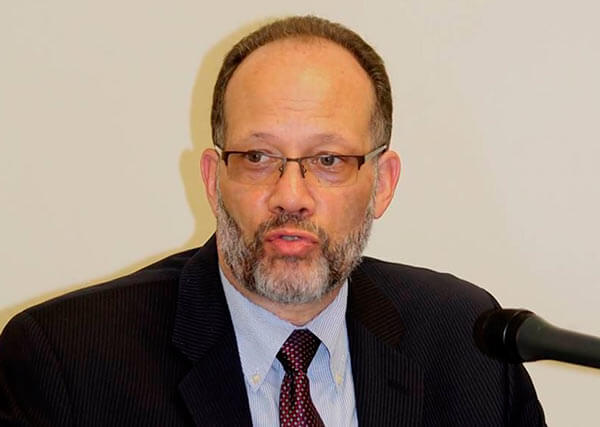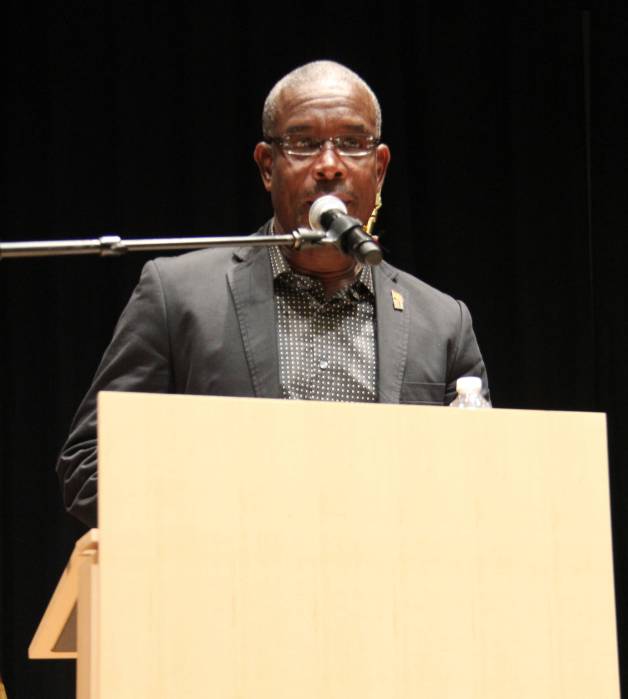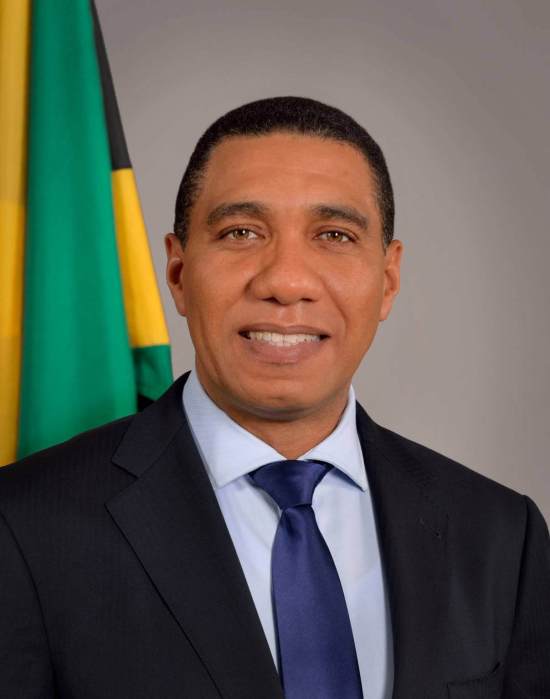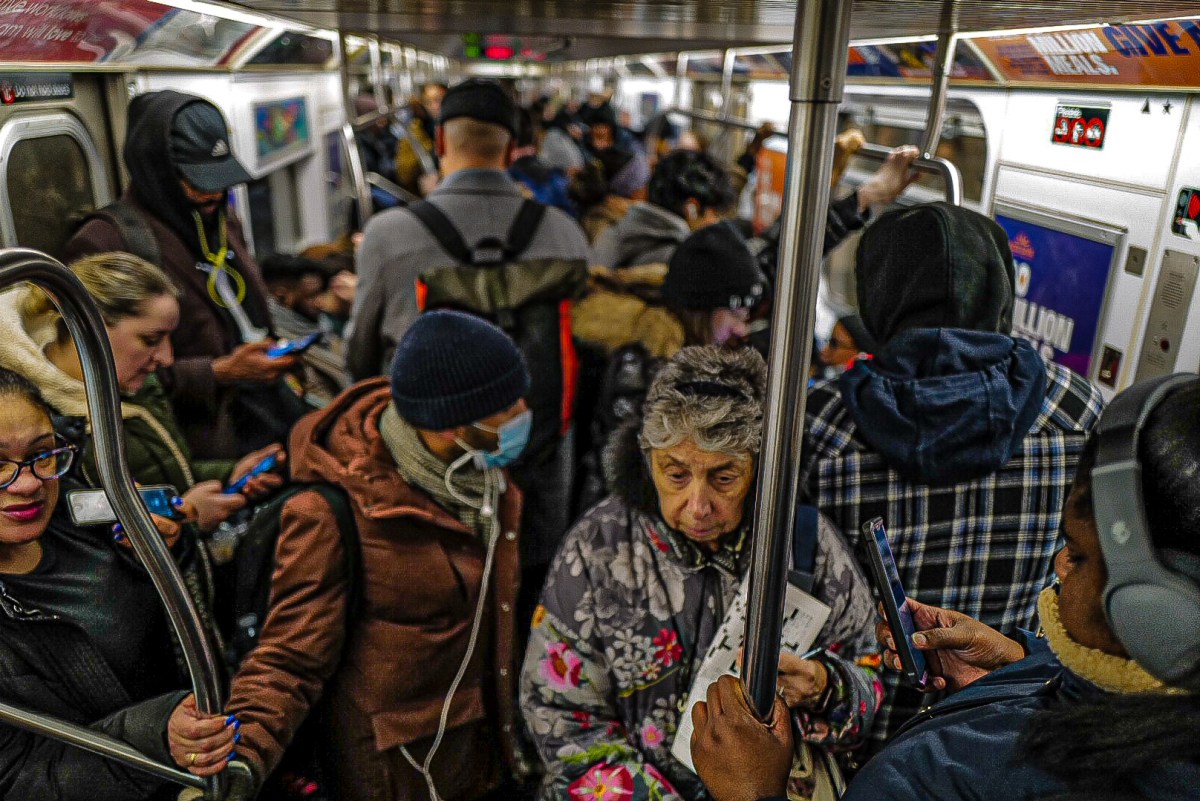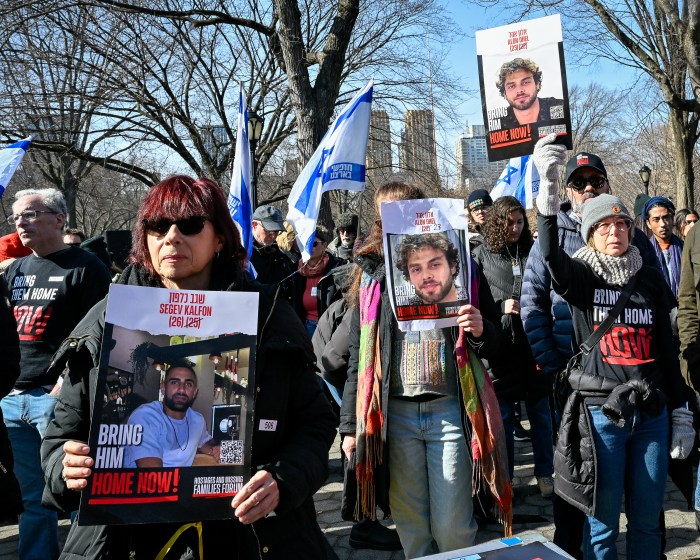Caribbean Community governments were this week preparing to organize a major international conference of donors to help raise billions to rebuild member and associates states ravaged by Hurricane Irma and for those still being threatened by Jose which is expected to become a full-fledged storm in the coming days.
After touring the British Virgin Islands, Anguilla and Barbuda along with bloc Chairman and Grenadian Prime Minister Dr. Keith Mitchell, Secretary General Irwin LaRocque said the level of destruction on the ground was mind blowing and the beyond belief of reasonable thinking people.
“It is mind boggling what we saw coming in. To see it on the ground is something else. Pictures tell you something but to pass through it is something else,” he said, sitting alongside Mitchell and Ronald Jackson, head of the Barbados-based Caribbean Disaster Emergency Management Agency (CDEMA).
Mitchell, who was head of government when Hurricane Ivan devastated Grenada back in September 2004, said governments are mobilizing regional and international efforts to bring relief to member states, as he recalled the sense of national confusion when Ivan hit at that fateful afternoon 13 years ago. “I can tell you that I was in a daze.”
He put the price tag to rebuild the BVI alone at more than $1B dollars, while LaRoque said that plans will have to be stepped up “to have a donors conference to bring all the parties together to try and match your needs. The World Bank is coming on soon enough. The Caribbean Development Bank has also come forward. We have to know when is the right time,” he said at a post tour media briefing.”
As CDEMA, governments, the regional private sector and other mobilize relief efforts for affected member states and Caricom nationals in the Dutch, British and French colonies, a regional expert has put general the repair and rebuilding tab at close to $13B.
“This is the highest costs ever for the Caribbean when you adjust for inflation,” said James Daniel, a risk analyst at the Center of Disaster Management and Risk Reduction Technology (CEDIM), based in Europe.
The previous most expensive natural disasters in the region were linked to Hurricane Ike in 2008 and Hugo in 1989 that bashed a number of islands the Antigua Observer reported.
Meanwhile, LaRocque noted that having been on the ground in some of the most affected islands, he now understands what occurred in the Virgin Islands.
“When it shook Tortola as a category five and you have heard it being described as a nuclear hurricane, I now understand what they meant. The damage is just overwhelming. One can shore up building codes as much as possible and there is always room for improvement I am sure but with a storm of that ferocity, that intensity and as large as it was the only thing that one could do is pray,” LaRocque told Barbados Today online publication.
Mitchell for his part said that while Anguilla and Barbuda were hard hit there is “nothing to compare to what we saw in BVI. It seems like we are going to have to place more focus on the BVI than what we had been thinking before. That is my estimation of the situation so far,” Mitchell told Today.
But even as the economies of worst hit ones are going to be affected for months to come, others like Dominica and Antigua are cashing in on the misfortune of others.
Tourism Minister Robert Tonge said severe damage to St. Maarten and Sint. Martin now means that large cruise ships will alter venues and include Dominica. Antiguan official painted the same picture. More than 40 people have died.
Other less negative news relate to the reopening of airports on several island including the one in Anguilla and both in St. Kitts and Nevis.
But given the magnitude of Irma and the fact that the storm season does not end for another 10 weeks, it is unclear if heads of governments will arrange an emergency conference in the coming weeks to deal with the situation as Irma was for protracted periods the strongest storm ever recorded in the Atlantic.


